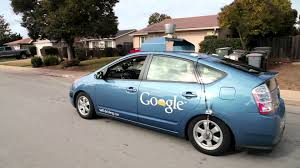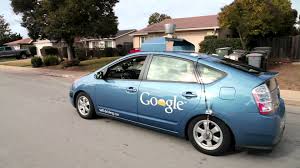
Google’s computers – rather than humans – should be defined as the “drivers” of a growing fleet of autonomous vehicles is what the tech company has managed to persuade the US government to agree to.
The National Highway Transportation Safety Administration (NHTSA) has ruled that the software behind some automated cars should be considered the driver in what is a significant precedent for Google and other companies developing autonomous car technology.
A letter from the federal agency to Google carried note of this decision recently.
For the purpose of mass-production of self-driving vehicles and selling them to consumers, the agency’s ruling is a key step for automakers. It is the most high-profile instance in which a federal agency has said a computer fits the legal definition of a human on a philosophical level.
In November, Google had submitted a request to the federal agency to how federal safety regulations – such as rules about seats, mirrors and brake pedals – would apply to a self-driving car and the letter was in response to that request. The government agency sets and enforces safety standards for US vehicles.
If its autonomous vehicles had to abide by a rule that requires vehicles to have an “occupant seat for the driver” is , for example, a query by Google.
Since it interprets the term “driver” as the self-driving system, “the ‘driver’ in this provision would not need an occupant seat”, the government agency responded to that query.
The NHTSA wrote in the letter that Google’s cars “will not have a ‘driver’ in the traditional sense that vehicles have had drivers during the last more than one hundred years”.
Reuters reported that the letter was sent earlier and discovered by the news agency on earlier this week.
The NHTSA wrote in the letter, which was sent last week and unearthed by Reuters on Tuesday.
“If no human occupant of the vehicle can actually drive the vehicle, it is more reasonable to identify the ‘driver’ as whatever (as opposed to whoever) is doing the driving.”
It has been several years that tech firms and automakers have been experimenting with self-driving cars. Google’s Silicon Valley campus has a number of such cars which usually have a human ready to take the controls if needed.
However a patchwork of state, local and federal regulations governed the operation of these vehicles. Approval from the NHTSA would be required if any automaker wanted to mass produce a driverless car to sell to consumers.
A race among tech firms and automakers to bring driverless cars to the masses has in many ways been led by Google. Tesla, General Motors and Toyota are among the other competitors in this field. Uber, the ride-hailing app, has been working on technology that could replace its fleet of human drivers at a research facility in Pittsburgh, Pennsylvania.
With trips in California, Texas and Washington state, Google says its cars have self-driven more than 1 million test miles. Its latest model lacks a steering wheel and a brake lever.
Viewing it as a way to minimize traffic deaths Silicon Valley’s push to take humans out of the driver’s seat has so far been supported b the US Department of Transportation. $4 billion over the next decade has been budgeted by the White House to promote the development of self-driving cars.
(Source:www.theguardian.com)
The National Highway Transportation Safety Administration (NHTSA) has ruled that the software behind some automated cars should be considered the driver in what is a significant precedent for Google and other companies developing autonomous car technology.
A letter from the federal agency to Google carried note of this decision recently.
For the purpose of mass-production of self-driving vehicles and selling them to consumers, the agency’s ruling is a key step for automakers. It is the most high-profile instance in which a federal agency has said a computer fits the legal definition of a human on a philosophical level.
In November, Google had submitted a request to the federal agency to how federal safety regulations – such as rules about seats, mirrors and brake pedals – would apply to a self-driving car and the letter was in response to that request. The government agency sets and enforces safety standards for US vehicles.
If its autonomous vehicles had to abide by a rule that requires vehicles to have an “occupant seat for the driver” is , for example, a query by Google.
Since it interprets the term “driver” as the self-driving system, “the ‘driver’ in this provision would not need an occupant seat”, the government agency responded to that query.
The NHTSA wrote in the letter that Google’s cars “will not have a ‘driver’ in the traditional sense that vehicles have had drivers during the last more than one hundred years”.
Reuters reported that the letter was sent earlier and discovered by the news agency on earlier this week.
The NHTSA wrote in the letter, which was sent last week and unearthed by Reuters on Tuesday.
“If no human occupant of the vehicle can actually drive the vehicle, it is more reasonable to identify the ‘driver’ as whatever (as opposed to whoever) is doing the driving.”
It has been several years that tech firms and automakers have been experimenting with self-driving cars. Google’s Silicon Valley campus has a number of such cars which usually have a human ready to take the controls if needed.
However a patchwork of state, local and federal regulations governed the operation of these vehicles. Approval from the NHTSA would be required if any automaker wanted to mass produce a driverless car to sell to consumers.
A race among tech firms and automakers to bring driverless cars to the masses has in many ways been led by Google. Tesla, General Motors and Toyota are among the other competitors in this field. Uber, the ride-hailing app, has been working on technology that could replace its fleet of human drivers at a research facility in Pittsburgh, Pennsylvania.
With trips in California, Texas and Washington state, Google says its cars have self-driven more than 1 million test miles. Its latest model lacks a steering wheel and a brake lever.
Viewing it as a way to minimize traffic deaths Silicon Valley’s push to take humans out of the driver’s seat has so far been supported b the US Department of Transportation. $4 billion over the next decade has been budgeted by the White House to promote the development of self-driving cars.
(Source:www.theguardian.com)





